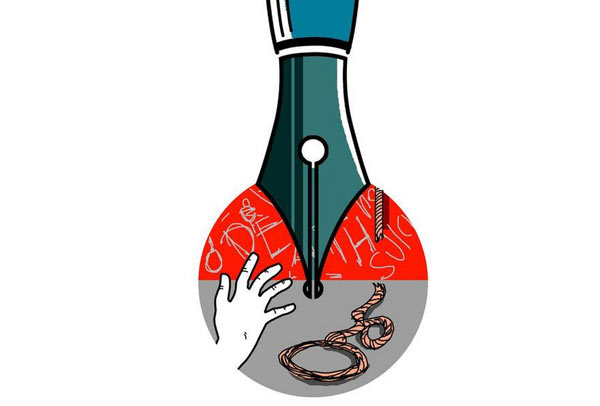

Photo: The Hindu
New Delhi, India (BBN) - The media should demystify suicide and help people at risk to make informed decisions.
Recently, someone posted a picture of a pre-teen who committed suicide. He had a blue whale tattooed on his hand and the media held the Blue Whale challenge responsible for his death, reports THE HINDU.
What is the Blue Whale challenge you ask?
It is a ‘game’ played on social media sites where the administrator supposedly hands out tasks of increasing difficulty until finally, the player is asked to end his/her life. The Blue Whale challenge is not an app, or a game to be downloaded and it is not a group on social media. It is a one-on-one conversation between the player and the moderator. This conversation can happen anywhere on the web.
UNVERIFIED
It is believed to have begun in Russia and has apparently spread to India recently. The information on the number of deaths across the world, the task list at each level, are all unverified, not facts. When most of the articles talk about the creator, they refer to one article published a while back. They take unverified information from there and state it as a fact. Many reporters have gone ‘undercover’ — created fake profiles and accounts across various social media sites and have not been able to find this administrator to play the ‘game’. Meanwhile, the number of sites coming up with information and ‘steps’ in the game are also growing.
I don’t know about you, but for me, the Blue Whale has been nothing other than fear mongering and spreading of false information. From posters printed and posted on the roads to WhatsApp videos, forwards and news coverage, it is all speculation. As it becomes larger than life, acts under its banner are going to continue to spread. The media is paying a lot of attention to this, as there are many reports of teens ending their lives with a blue whale etched on their forearms. These deaths are reported with huge headlines and images of the etched whale. A headline stating that Blue Whale killed a teenager is like linking abusive Eminem lyrics to domestic violence and assault. Sure, it can trigger an act but it’s not the only factor, and it’s not the cause.
RESPONSIBLE
India has the highest rate of youth suicide in the world. A Lancet study in 2012 showed that between the ages of 10-24, suicide was the leading cause of death. We have the most number of young people in the world, and adolescents kill themselves in India more than in any other part of the world. If there is something that is contributing to the numbers increasing like the Blue Whale challenge, yes, we should certainly be worried about it. Suicide is not very well understood, and there are many reasons why India has the highest rate of youth suicide in the world. The onus is on the media to understand and spread information on mental health and well-being responsibly.
September 10 was World Suicide Prevention Day. The media and the Internet are becoming increasingly relevant in the spreading of information about suicide methods. I’m not saying that reporting is causing suicides; I’m saying it is time our journalists became responsible and were educated on the ethical ways of reporting a suicide. There are many scientific studies that show that incidences of suicides can increase with media attention to it. Several countries and organisations have launched resources to educate media professionals.
For instance, at one point, Vienna had very high rates of suicide. The media reported each death with a lot of detail, and soon there were many copy-cat deaths, also known as the Werther effect. A panel was formed and guidelines issued for reporting suicide. Studies have shown falling rates of suicides following media adherence to these guidelines.
HERE ARE A FEW RECOMMENDATIONS FROM THESE GUIDELINES:
• Avoid romanticising suicide, which can have a profound effect on at-risk teens
• Refrain from detailed descriptions of the method of death. While you may need to provide a description of the cause of death, you should not provide a “how to” guide for dying by suicide.
• Do not portray suicide as an inexplicable act. Suicide has causes, even if these causes are not immediately obvious.
• Do not rely on immediate accounts of a suicide from shocked and grieving friends and relatives (such as statements that there were no warnings before the act).
• Be aware of the implications of language about suicide. For example, avoid using the term “failed suicide attempt,” as it implies that a person who has survived such an attempt is a ‘failure’.”
Suicide, like dengue, tuberculosis and HIV is a public health problem. Given that the Blue Whale Challenge is ‘targeted’ at youth who are a vulnerable demographic, the media has a huge role to play.
The media can play a valuable role in preventing suicide by demystifying it and helping people at risk to make informed decisions about how they can help themselves.
They should take the Blue Whale Challenge as an opportunity for public education on suicide prevention, and not as an opportunity to get ratings through dramatisation and fear mongering.
BBN/MMI/ANS